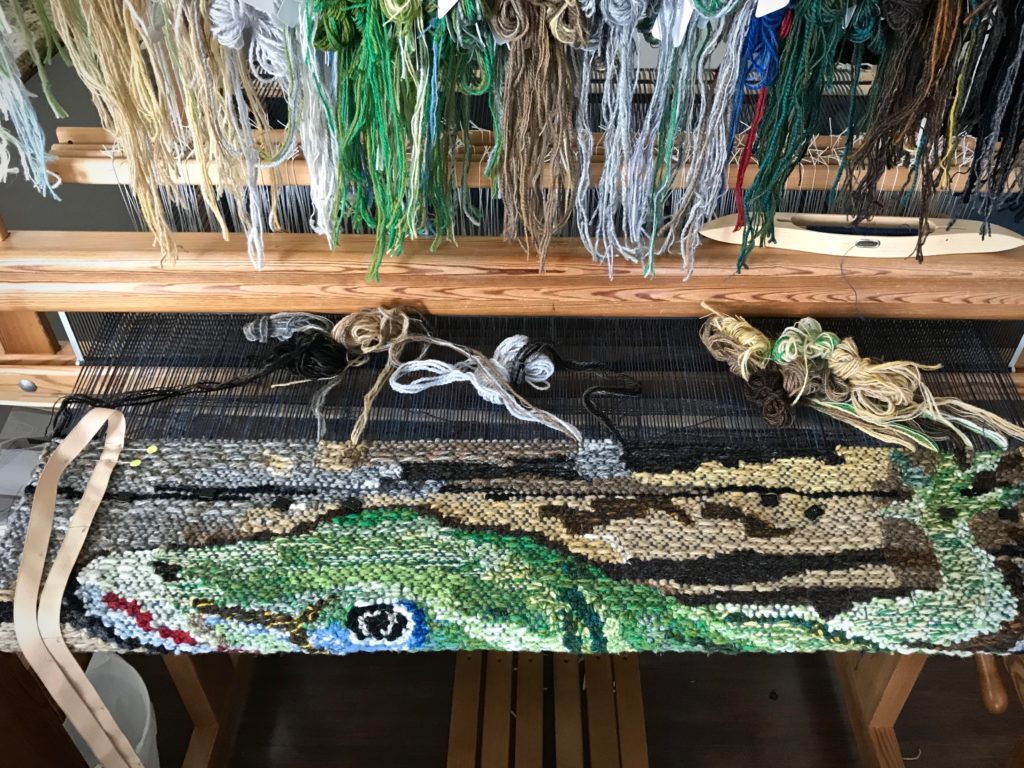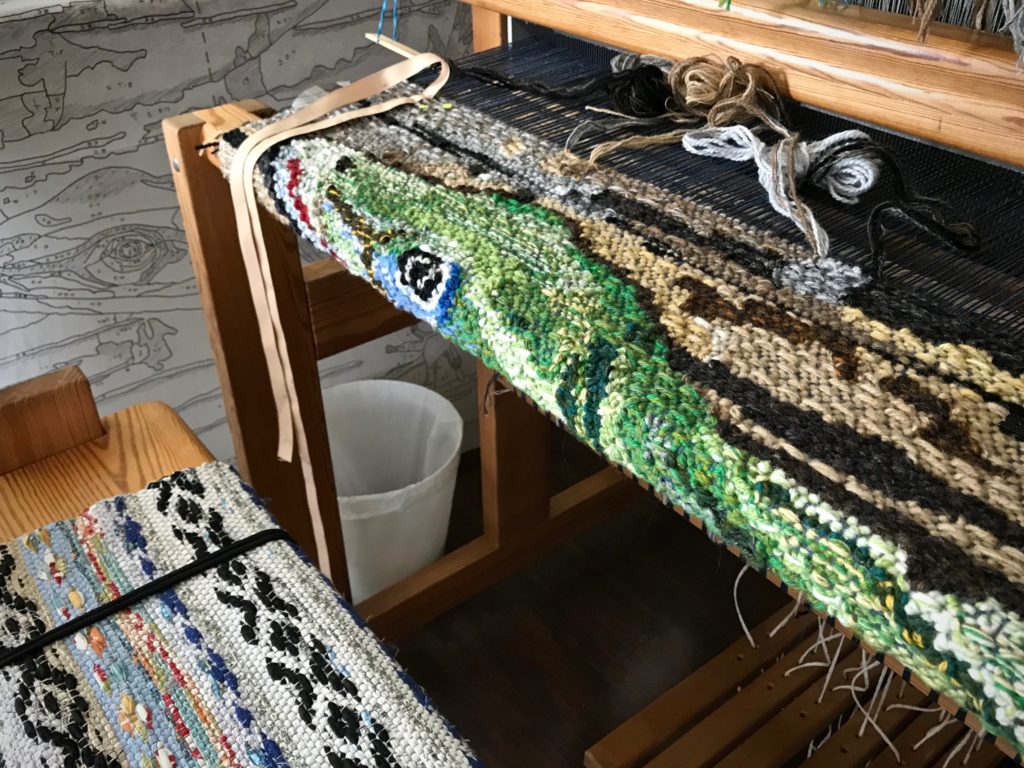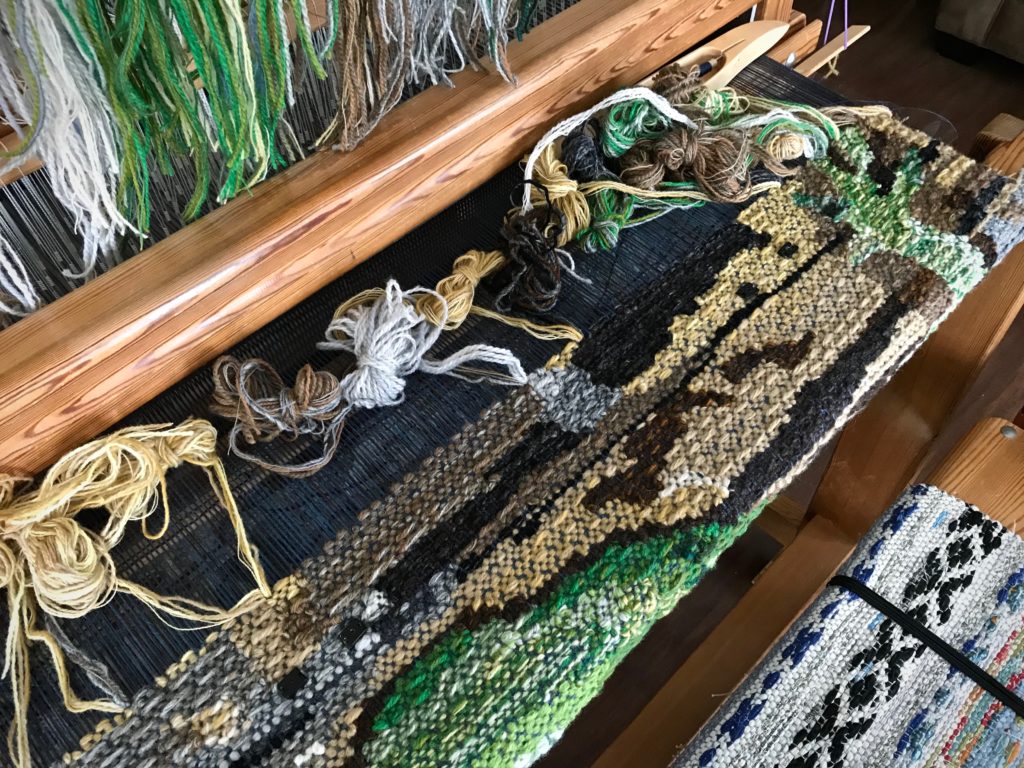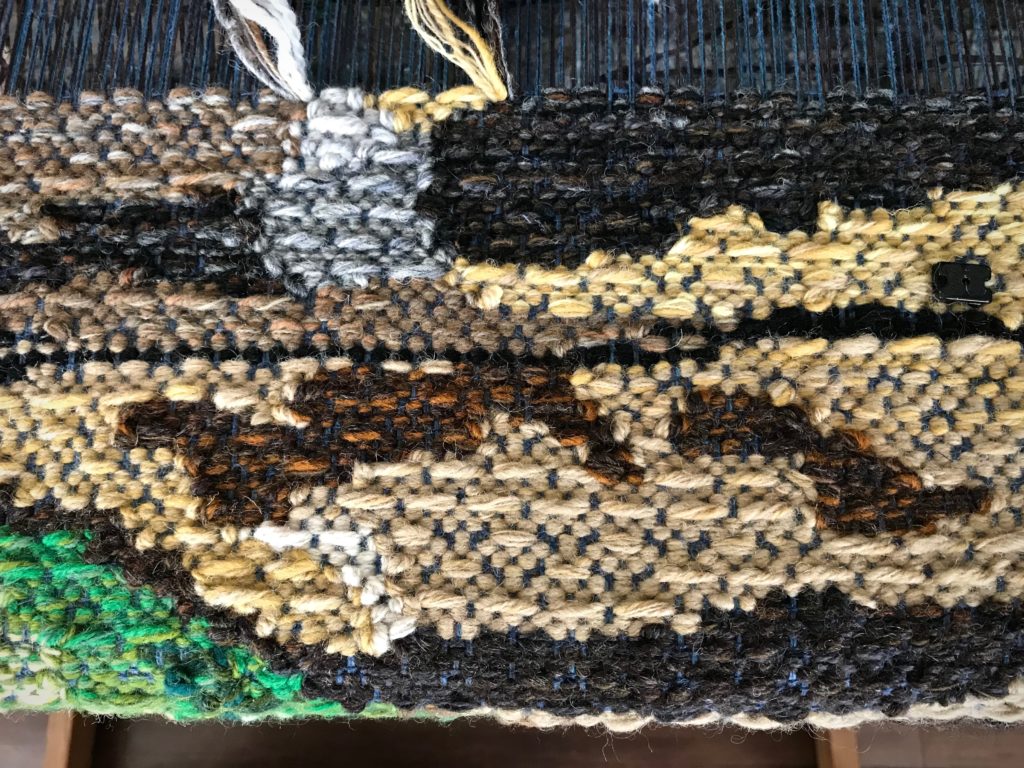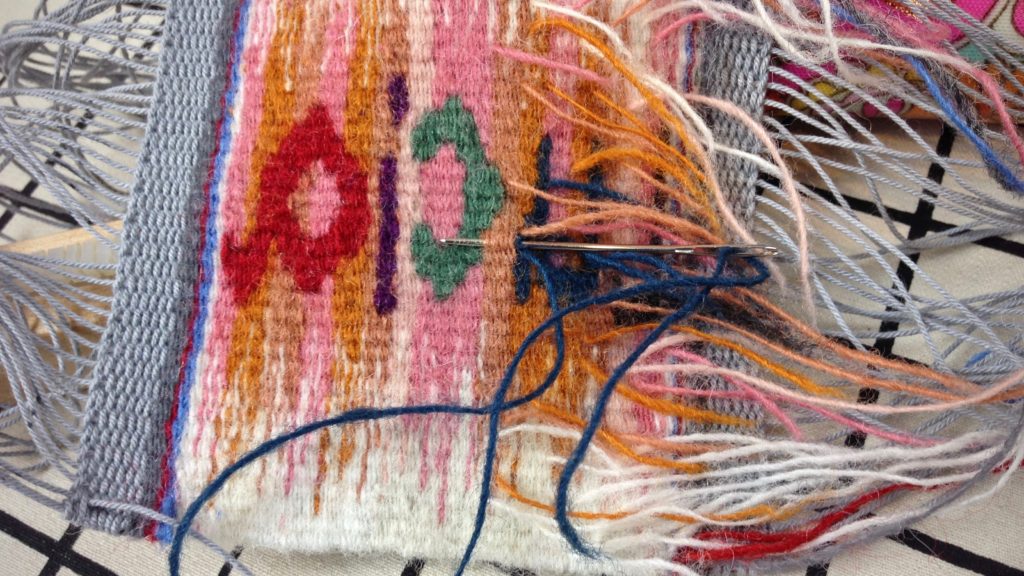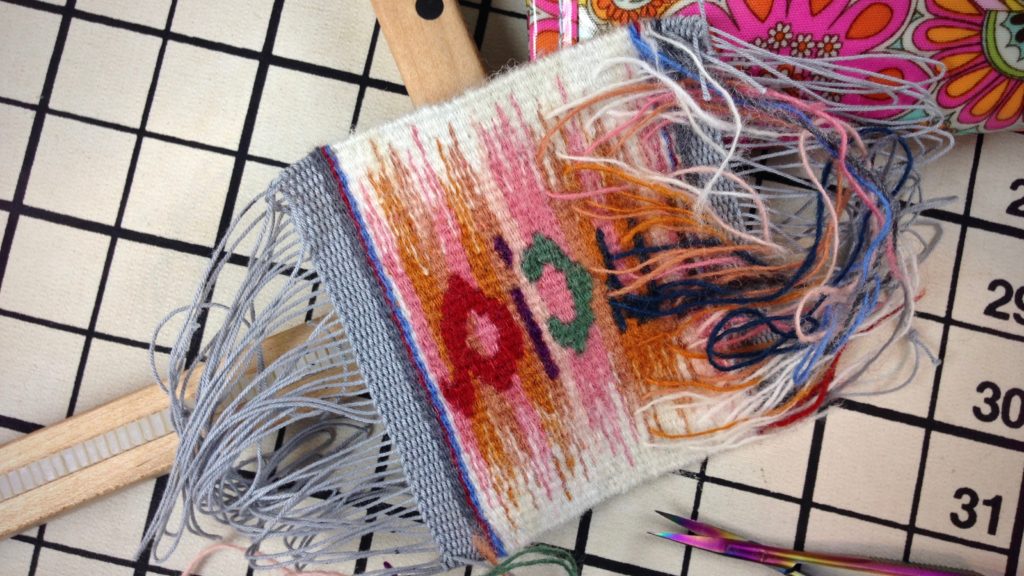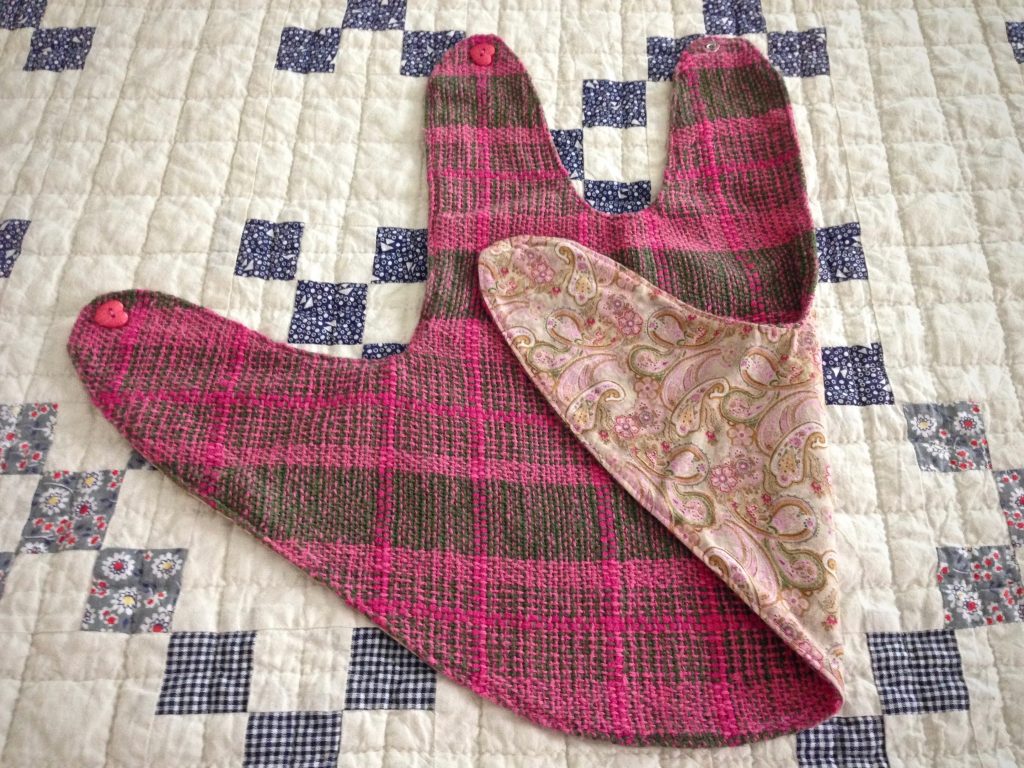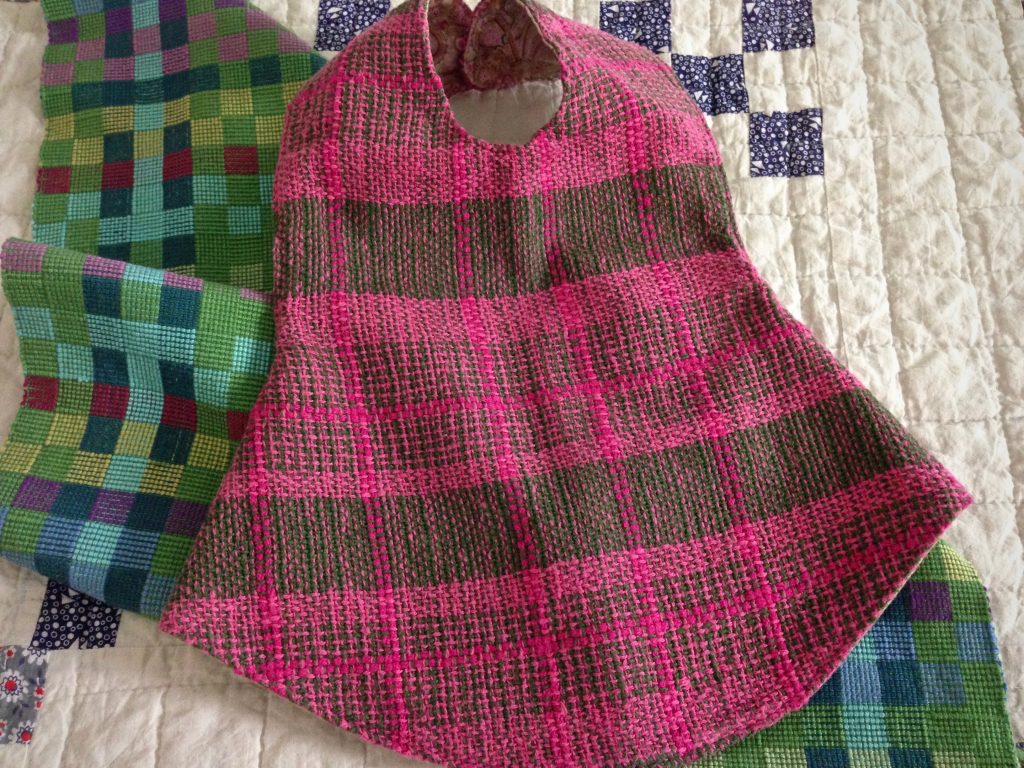It’s as if every row ends with a cliffhanger, and I want to see what will happen next. I know the end of the story, but I’m still eager to see how it plays out. This is how I experience tapestry weaving. I linger here as long as I can. When I do walk away from the loom, I’m already anticipating the next time I get to do this.
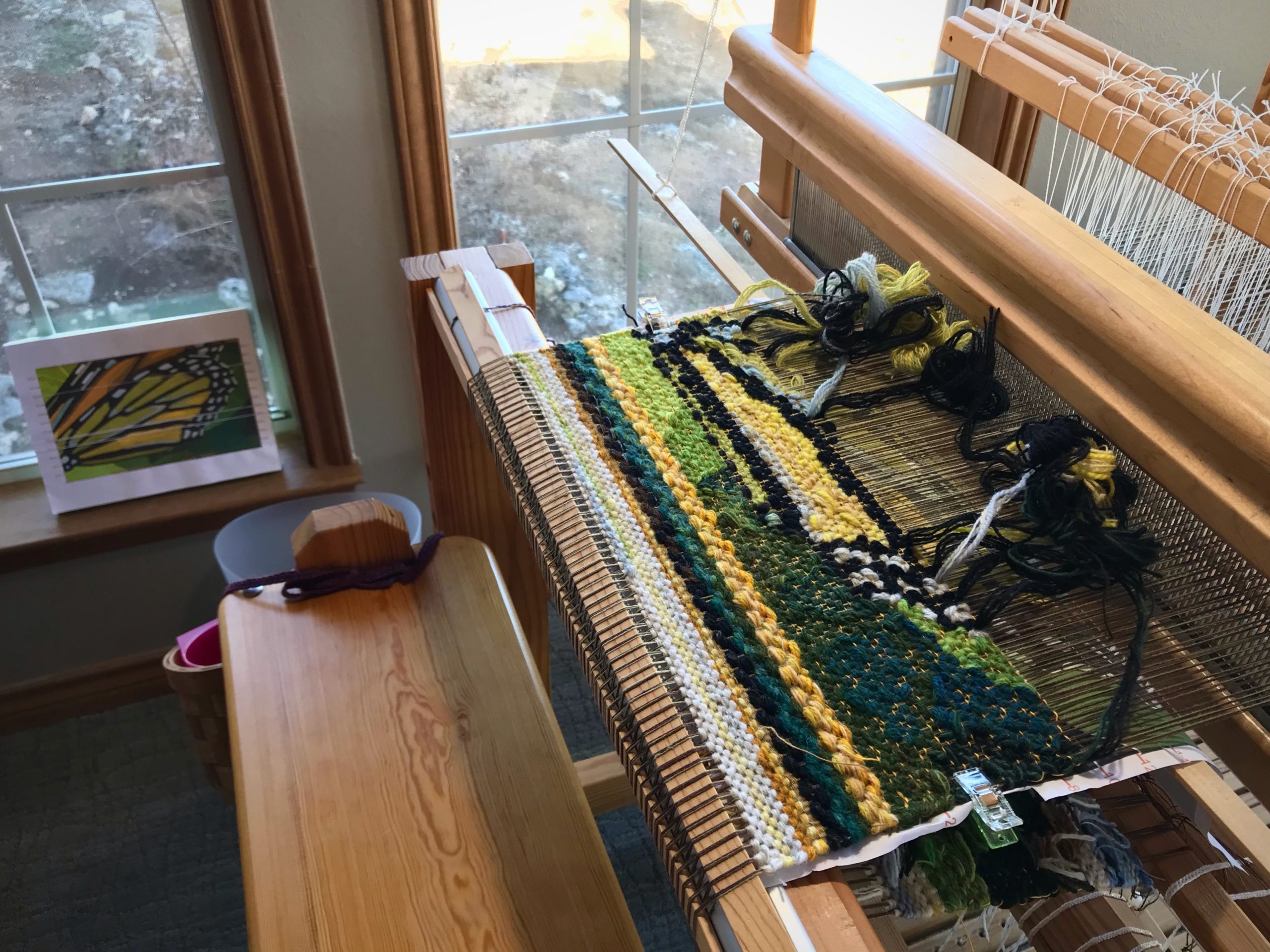
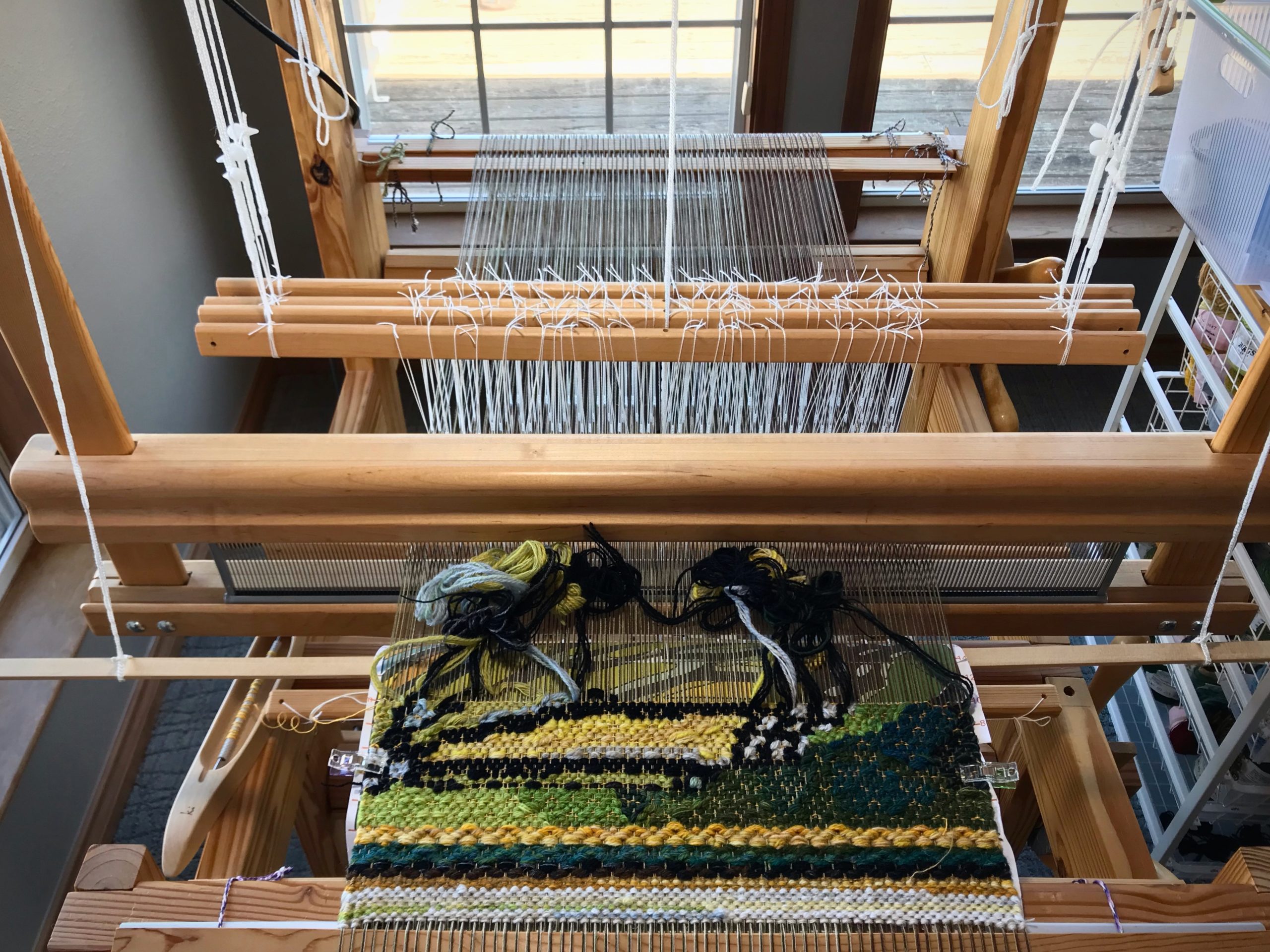
I use a cartoon of reduced size as a color reference for making butterflies. A black-and-white version shows me value contrasts. I twist strands of yarn together to find a specific hue and value. Each new butterfly becomes integral to the cliffhanger story. At the loom, my thoughts are fully engaged in the details of this story.
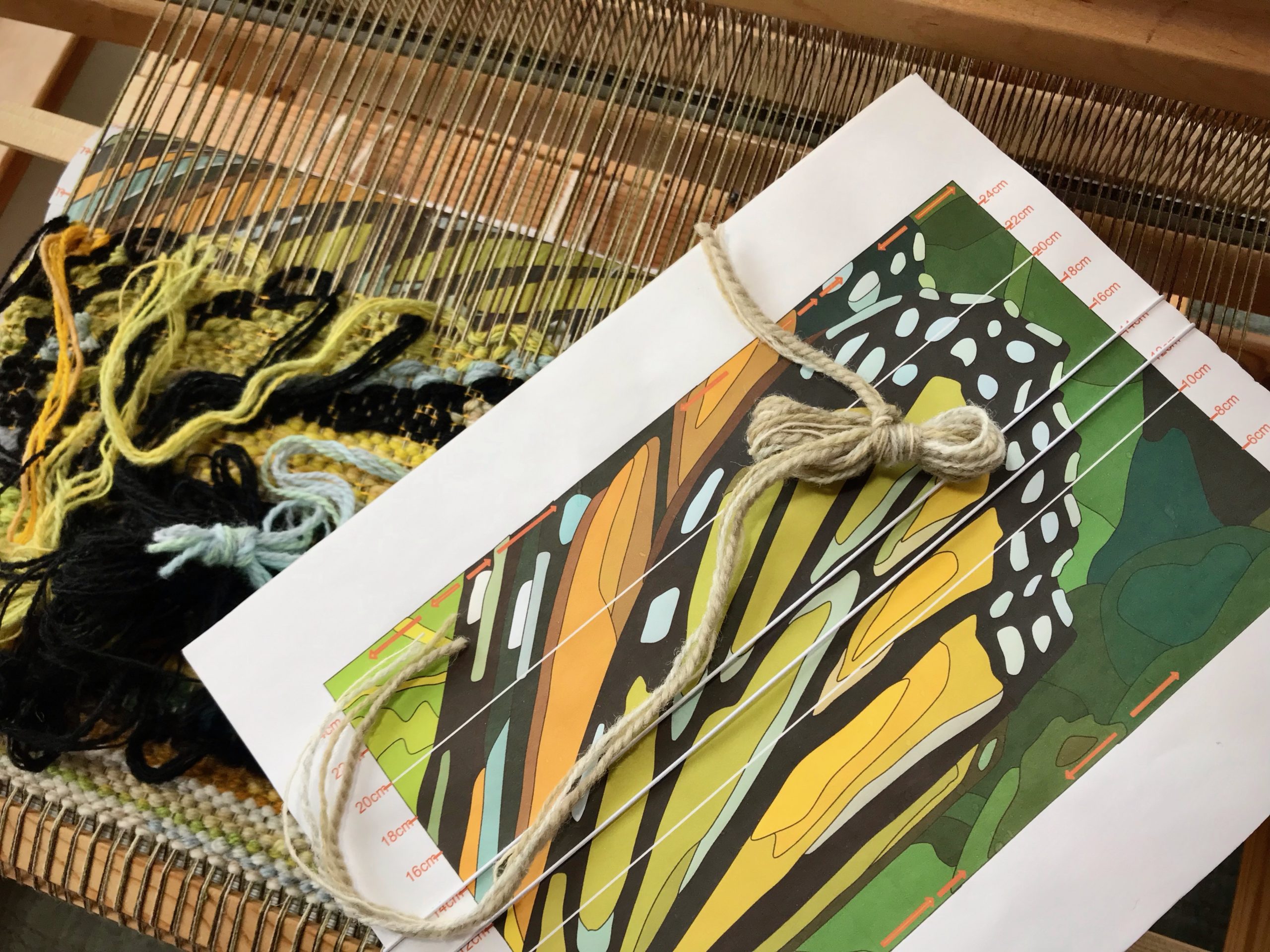
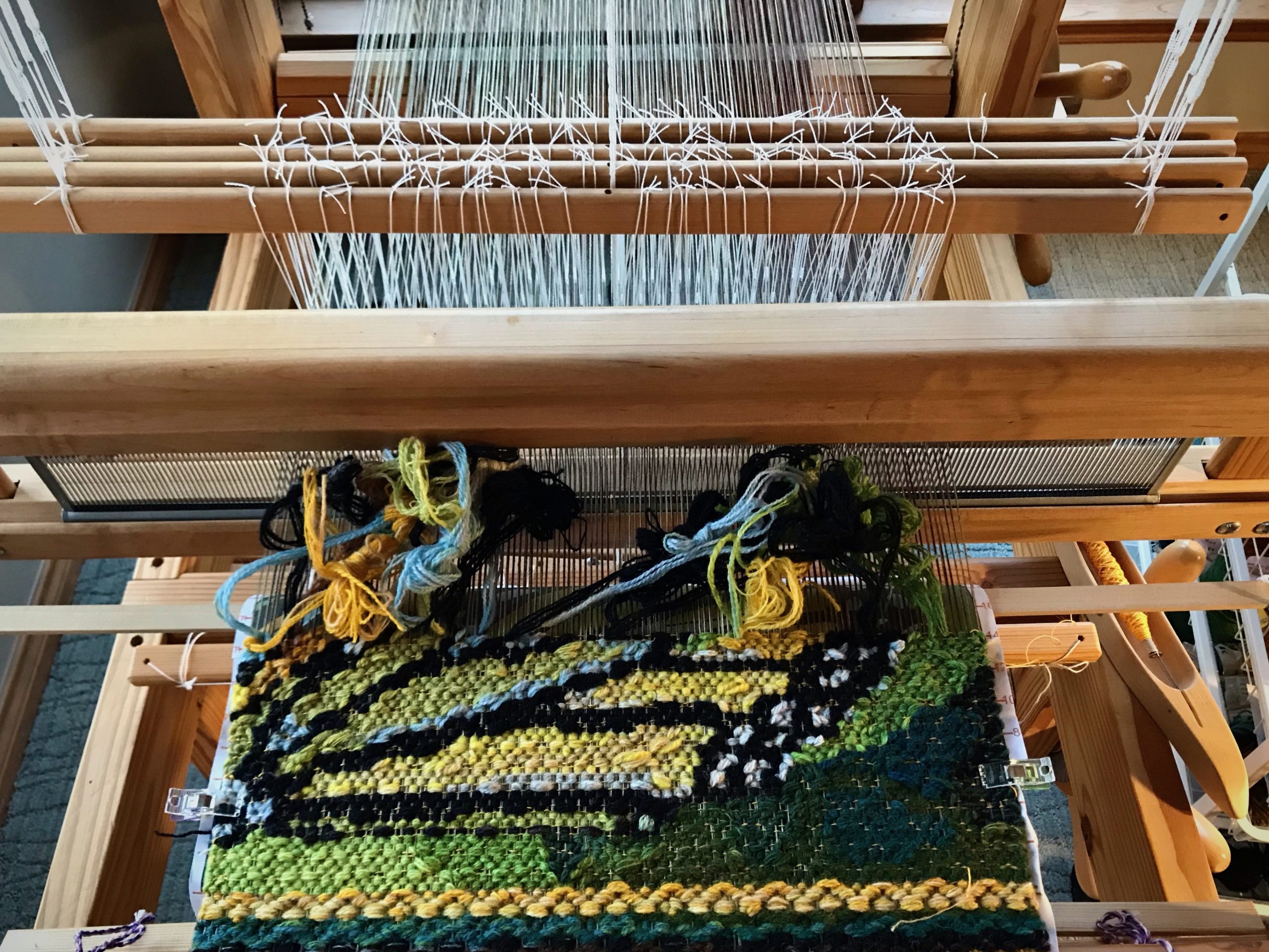
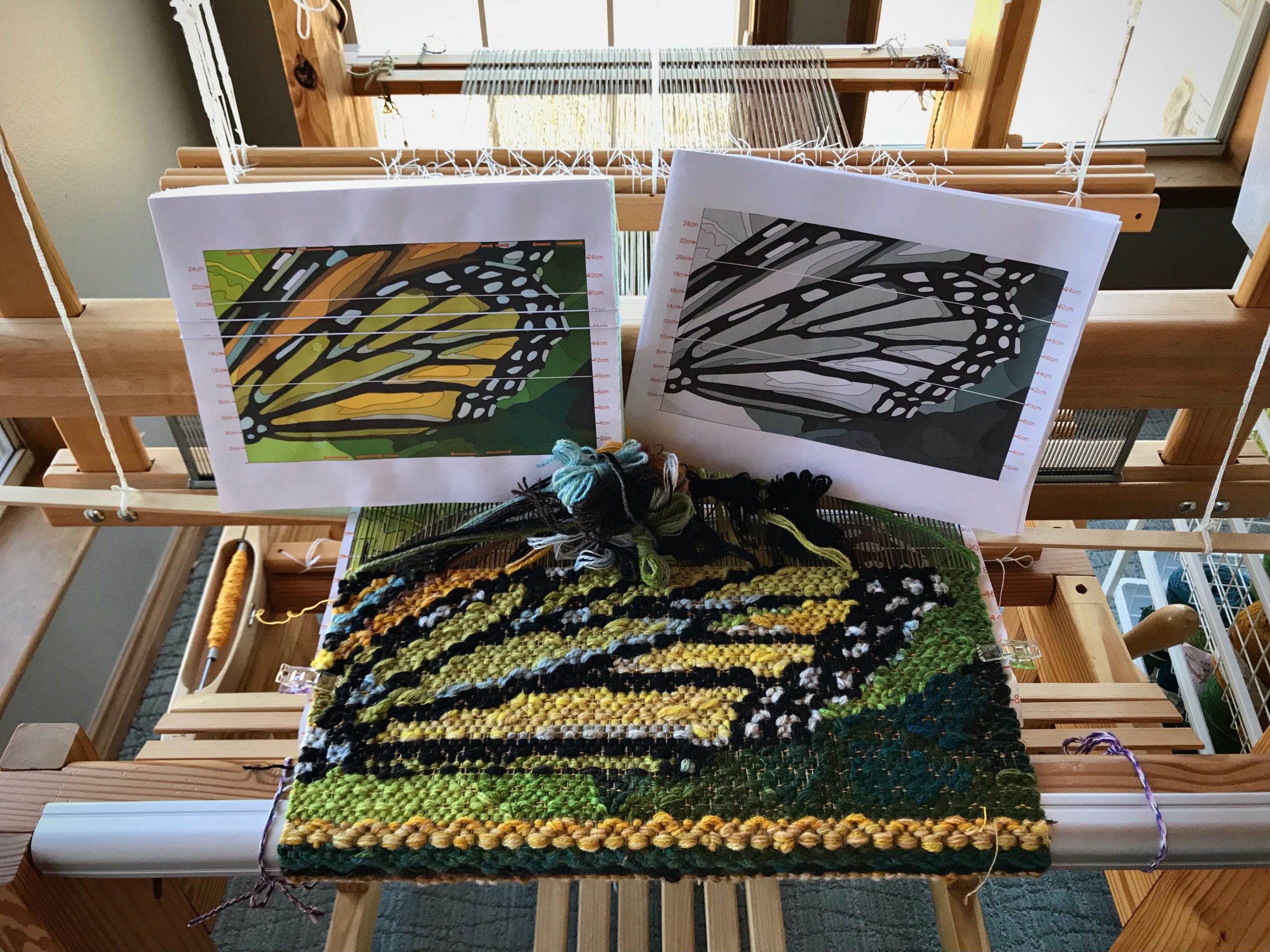
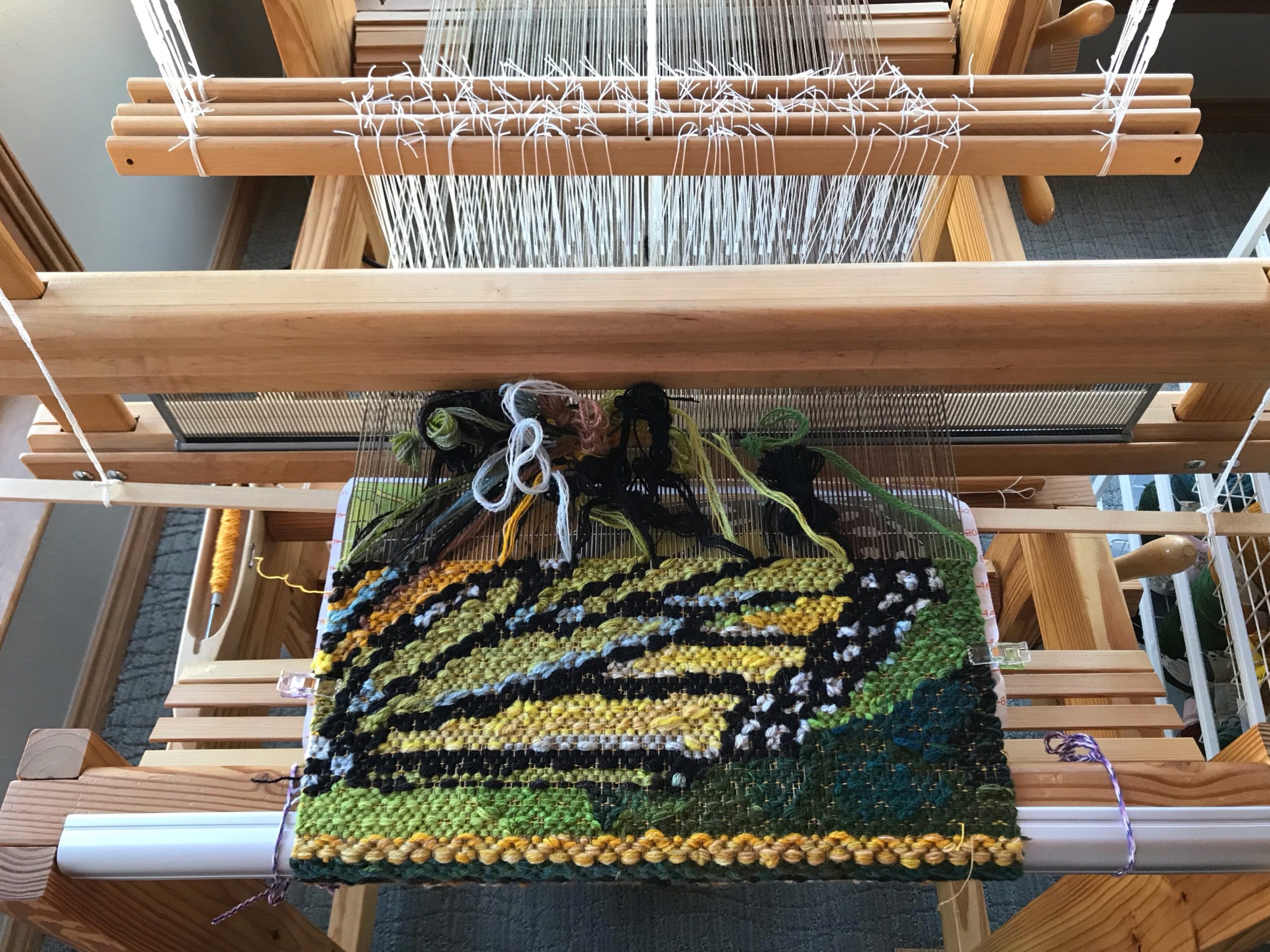
When I pray, my thoughts are fully engaged in the details of life. Prayer answers our heavenly Father’s invitation to come and be alone with him. He listens as we talk to him about our life’s cliffhangers. Prayer is so much more than making requests. It’s about consulting with our Father to gain his heavenly point of view for the tapestry he is creating. When we see the strands come together just so, we know our life’s story is in the Grand Weaver’s hands.
May your cliffhangers have happy endings.
Your friend,
Karen

